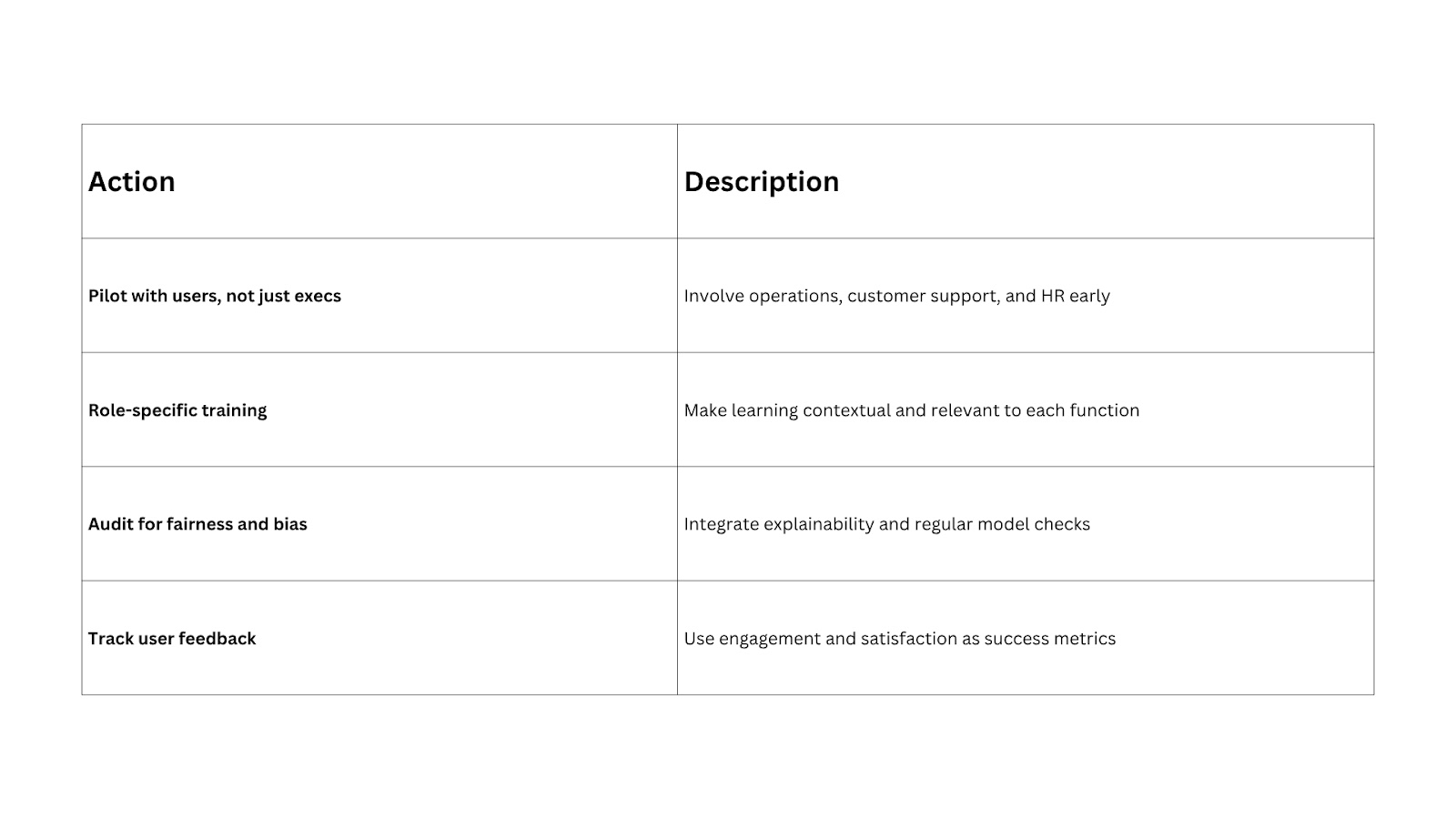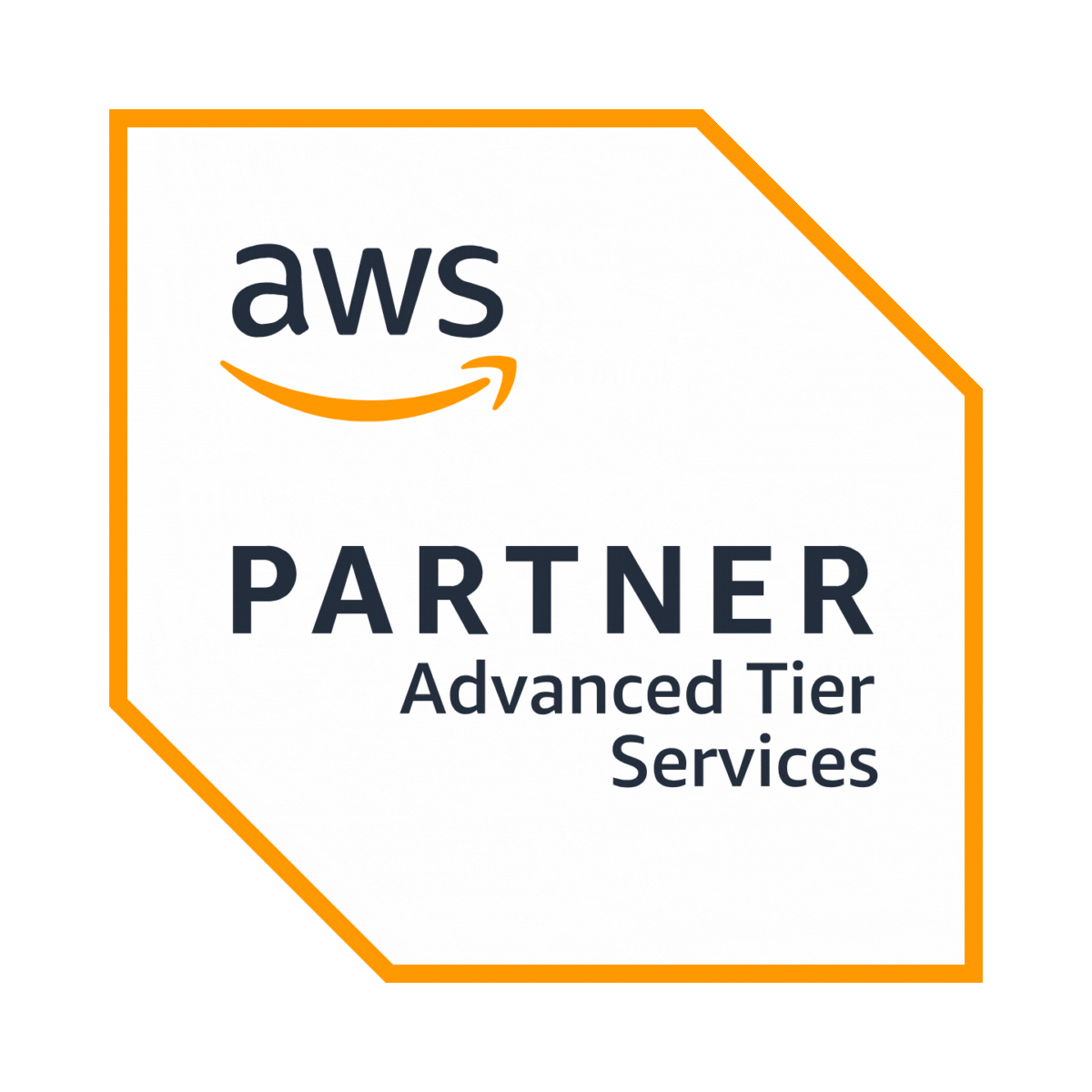As organizations rush to integrate AI, many assume success depends solely on data, infrastructure, or model complexity. But according to Forrester’s landmark report, Ground Your Workforce AI Strategy in Human Experience, companies that succeed with AI do something radically different: they center the workforce in the strategy from day one.
This approach, anchored in empathy, ethics, and enablement, doesn’t just boost productivity. It builds trust, supports culture, and future-proofs the organization against change fatigue.

The AI boom is real, but employee trust is fragile
Adoption numbers are up, but workforce readiness is lagging. Without training and transparency, AI rollouts often lead to mistrust and misuse.
According to McKinsey, over 78% of companies now use AI in at least one business area.
Yet a KPMG study of 48,000 employees shows:
- 44% use AI without formal guidance
- 58% don’t verify AI outputs
- 53% admit passing off AI-generated work as their own
Only 47% received any AI-related training. This gap presents serious risks, not just to productivity, but to brand and workplace culture. Employees fear automation, bias, and role obsolescence. Unless AI is introduced with clarity and purpose, skepticism can derail its benefits.
Why a human-first approach drives AI success
Organizations that prioritize the human side of AI, training, experience, trust, see higher performance, better retention, and more scalable outcomes.
1. Higher usage and satisfaction
Forrester’s research shows human-centered AI tools are adopted 3.7x more often, with double the workforce satisfaction. When employees feel ownership, they engage fully.
2. Boosted creativity and performance
Even limited AI users report time savings and improved output. TechTarget notes that 90% of office workers using AI tools find them helpful, especially for brainstorming, writing, and research.
3. Trust through transparency
Employees are more likely to use AI ethically when they understand how it works. Deloitte found that companies with strong AI governance achieved 28% more usage and up to 5% higher revenue growth.
4. Improved mental well-being
Employee-centric AI reduces burnout by streamlining tedious tasks. When designed with empathy, these tools empower rather than overwhelm.
Four essential pillars of a human-first AI strategy
Grounding AI in human experience doesn’t mean slowing down, it means designing smartly from the start. Here are four pillars to build your strategy around:
1. Co-create tools with employees
Instead of top-down implementation, bring employees into design phases. Pilot tools with cross-functional teams, incorporate their feedback, and iterate.
This drives adoption and uncovers hidden friction points. For example, in one client project, involving frontline sales reps early helped us fine-tune an AI assistant's language and workflow, resulting in a 60% increase in tool engagement.
2. Upskill for confidence, not just compliance
Training shouldn’t be generic. Offer role-based learning, product teams need different AI fluency than HR or finance. Combine quick microlearning with access to AI experts.
If internal bandwidth is limited, consider IT staff augmentation. External specialists can guide your workforce through best practices while building internal champions.
3. Build ethical guardrails early
Trust is earned through transparency. Use explainable models, visible audit trails, and escalation paths for when AI gets things wrong.
Embed AI governance into your systems, not just for compliance, but to demonstrate accountability. This matters especially in regulated sectors like finance and healthcare.
4. Measure employee experience, not just efficiency
Don’t just track cost savings. Assess how AI impacts morale, adoption, and job clarity. Is the tech helping employees feel more capable, or more replaceable?
Use sentiment surveys and usage analytics to evaluate tool perception. This data helps adjust rollout strategies for greater engagement.

Industry benchmarks prove the power of people-first AI
Recent studies validate the human-first model. When AI is deployed with training, transparency, and empathy, ROI improves across the board.
- Slack’s Future Forum found daily AI users were 246% more likely to feel connected to coworkers.
- Morgan Stanley noted significant financial returns in sectors that embraced AI responsibly, especially insurance (71%) and fintech (73%).
- A Forrester-backed study found that pairing human support with AI in customer service increased satisfaction by 69%.
These results echo Forrester’s core message: AI enhances business when it elevates people.
Case spotlight-Enabling HR with GenAI
Here’s a real-world example of a human-first AI project done right.
A global airline needed to modernize its HR-tech platform. Rather than impose automation, we co-designed GenAI features with HR staff, automated screening, policy navigation, and onboarding FAQs.
Results included:
- 85% employee satisfaction with new tools
- 50% reduction in manual tasks
- Greater strategic focus for HR professionals
Most importantly, no roles were eliminated. Instead, human time was redirected to areas where it made the most difference, coaching, problem-solving, and engagement.
How to embed this approach into your own organization
The shift to human-centered AI requires practical steps. Here’s how you can apply this mindset:

If you’re building custom AI products or scaling enterprise models, our AI and Data Services team supports everything from roadmap to delivery.
Your AI is only as good as your people’s experience
Tools are powerful, but people determine value. By grounding your AI strategy in human experience, you unlock not just performance, but trust, creativity, and long-term growth.
This is the shift forward-thinking leaders must make. Forrester’s research makes it clear: AI projects grounded in empathy and inclusion are the ones that scale and succeed.
Want to explore how to design a human-first AI approach tailored to your business? Talk to our experts for a consultation.


















